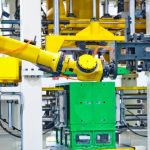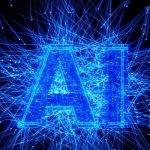The James Webb Space Telescope (JWST) has made remarkable discoveries, identifying supermassive black holes (SMBH) in the early universe, far earlier than previously thought possible. These SMBHs are found in active galactic nuclei merely 500,000 years after the Big Bang. This finding challenges pre-existing astronomical theories about the timeline of SMBH formation and growth.
Earlier findings indicated that monster black holes, like those at the centers of galaxies, take billions of years to achieve their massive sizes. They typically grow by consuming nearby stars and gases or merging with other SMBHs. The Milky Way’s central black hole, for example, has a mass of four million solar masses, but these newly discovered SMBHs appear to have reached their massive sizes in less than a billion years.
Building Supermassive Black Holes in Ancient Times
“How surprising it has been to find a supermassive black hole with a billion-solar-mass when the universe itself is only half a billion years old,” said astrophysicist Alexander Kusenko, a professor of physics and astronomy at UCLA. “It’s like finding a modern car among dinosaur bones and wondering who built that car in the prehistoric times.”
One theory is that the first Population III stars, which formed shortly after the universe cooled, contributed to early SMBH formation. These stars, devoid of elements heavier than helium, had short life spans and ended as supernovae, potentially merging into larger black holes. Another possibility is the “gravo-thermal” collapse of dark matter halos, leading to the formation of SMBHs. Additionally, primordial black holes formed immediately after the Big Bang might have merged to create these giant black holes.
From Cloud to Black Hole Formation via Dark Matter?
Dark matter’s role in the formation of SMBHs is another hypothesis. Decaying dark matter might have created conditions that prevented hydrogen gas clouds from fragmenting, allowing them to collapse into SMBHs. Radiation from decaying dark matter particles could inhibit molecular hydrogen formation, thus promoting the growth of large gas clouds that eventually formed supermassive black holes.
Mysteries of Dark Matter and SMBH Need Answers
Dark matter, constituting a major part of the universe, remains a mystery. Its gravitational effects are known, but its composition is not. Theories suggest dark matter particles could decay, influencing the formation of SMBHs by preventing gas clouds from cooling too quickly. Evidence of dark matter’s impact can be traced through cosmic optical background measurements, providing clues about the early universe’s radiation and SMBH formation.
While these ideas are still under investigation, they open new avenues for understanding the formation of early SMBHs and the role of dark matter. Future research and observations using instruments like JWST and New Horizons LORRI will be crucial in unraveling these cosmic mysteries.










